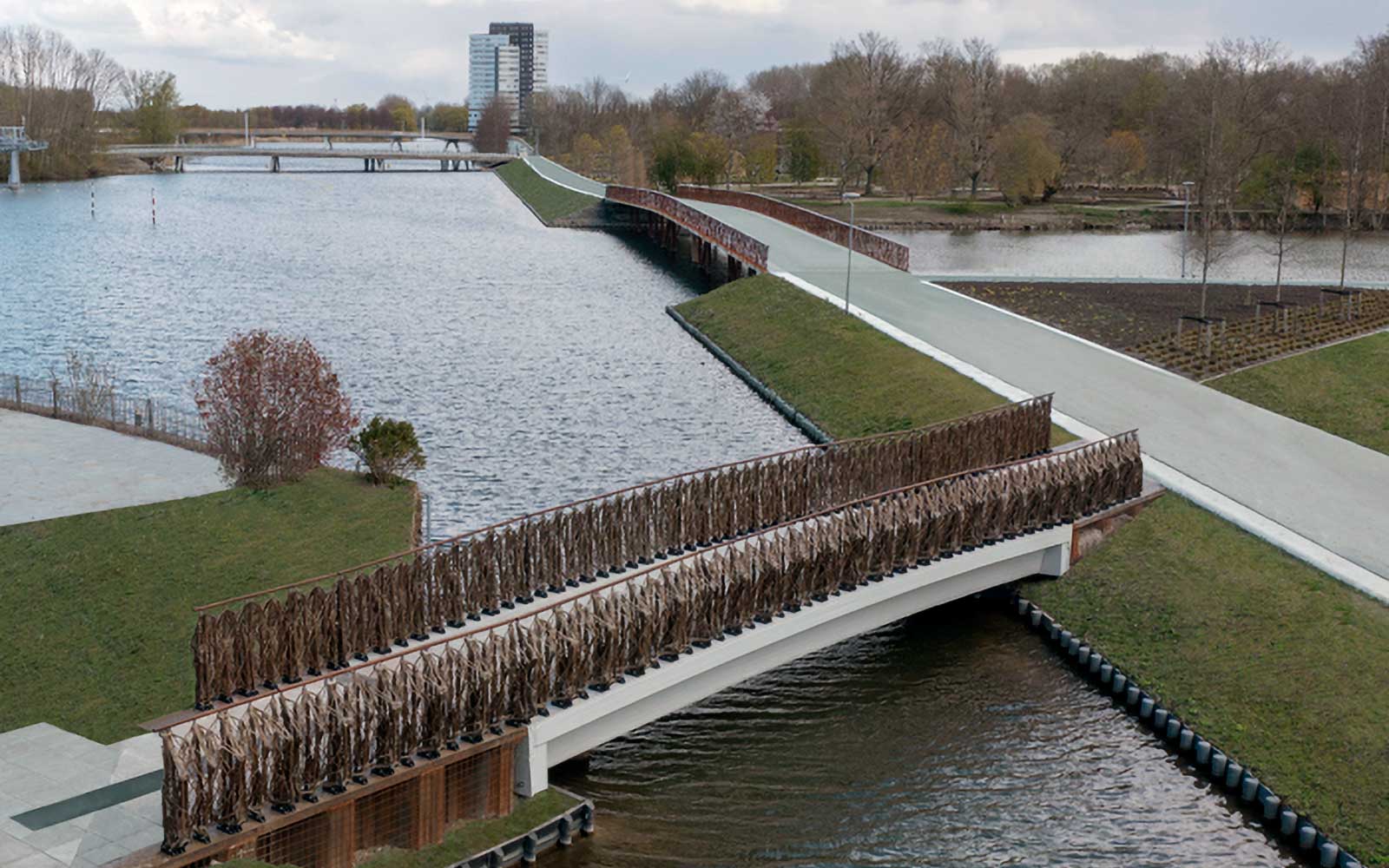The first “Smart Circular Bridge” with a span of 15 metres has now been realised by an international consortium of 15 partners (including the Centre of Expertise Biobased Economy) led by Eindhoven University of Technology. The project team consists of 5 universities, 7 innovative companies and 3 municipalities. The first bridge will be opened on 22 April at the Floriade, the international horticultural exhibition in Almere, The Netherlands. In 2022 and 2023, two more Smart Circular bridges for pedestrians and cyclists will be realised in Ulm, Germany, and in Bergen op Zoom, the Netherlands. With this intensive cooperation between science, industry and local authorities, a multitude of innovations will be launched.
In addition to 100% natural flax fibres, the resin will also come from non-fossil sources as much as possible. The proportion of bio-resin is currently still 25% for the first bridge, but this will increase to 60% or more for the subsequent bridges. This will be achieved by using waste products from biodiesel production and recycled PET bottles.
Materials research with AI
Because biocomposites offer great potential, research into the material is ongoing. The bridges are systematically monitored in real time. Almost 100 sensors in the bridge provide data on the behaviour of the material in daily use. How does the construction behave when 200 people walk over it at the same time? What happens in the different seasons, during storms, hail and snow? How does the ageing process of the material unfold in detail?
The bridge management system, with optical fibre sensors in the bridge, provides information about material strains and stresses. Acceleration sensors detect even the finest vibrations, caused by use or, for example, wind. The evaluation is carried out using artificial intelligence (AI) to recognise patterns in material behaviour. The data can also be viewed by the public on a dashboard on a public website (dashboard.smartcircularbridge.eu). At the same time, engineers can use this data to refine their calculation and material models. Based on this, they will further develop the material and design models for the next bridges and possibly many other applications. Currently, teams are already researching columns and façade elements in biocomposite material. Rotor blades of wind turbines are also conceivable.
Circular design
With the circular economy in mind, the project is investigating what options there are for the building material after the bridges have reached the end of their lifespan in many decades. At the moment, three possibilities are being further investigated: mechanical, chemical and even biological recycling with fungi and/or bacteria. It is important that the use/lifetime cycle of the material is as long as possible. To achieve this, end-of-life options must be considered from the start of projects.
The EU project “Smart Circular Bridge” shows much more than bridge building. It is a vivid example of how innovations for climate protection and the circular economy can be successfully launched by involving stakeholders. For bridges alone, it is worth considering alternative materials, as tens of thousands of them will have to be replaced in Europe in the coming years.



